Renewable energy in the Netherlands has been a hot topic for years. With the impacts of climate change becoming ever more real, the Dutch — and the rest of the world — need to seize every opportunity to create a more sustainable and resilient future.
Renewable energy in homes is just one piece of the puzzle, as tackling all of the climate change as an individual is pretty daunting.
But getting green energy to your own home in the Netherlands doesn’t have to be a hassle, and it can be a great way to contribute to a greener world.
So how is the land of a thousand windmills doing in its transition to a low-carbon economy? And what can you do to contribute to the Netherlands’ move away from fossil fuels towards green energy?
Here’s what you need to know about green and renewable energy in the Netherlands. 🙌
Quick review: What is renewable energy?
Renewable energy comes from self-renewing natural sources and processes, such as sunlight or wind.
Unlike fossil fuels, renewable energy sources are constantly being replenished and can, therefore, in theory, never be depleted.
Green energy (a subgroup of renewable energy that doesn’t harm the environment) is the most environmentally friendly kind.
Renewable energy share in the Netherlands
As great as the Dutch are in many other things, renewable energy uptake is not (yet) their forte. Currently, the Dutch energy supply is still dominated by natural gas and coal. In 2021, natural gas made up 47% of the country’s primary energy supply. It is also one of the largest gas producers in Europe, however, renewable energy production is slowly rising in the Netherlands.
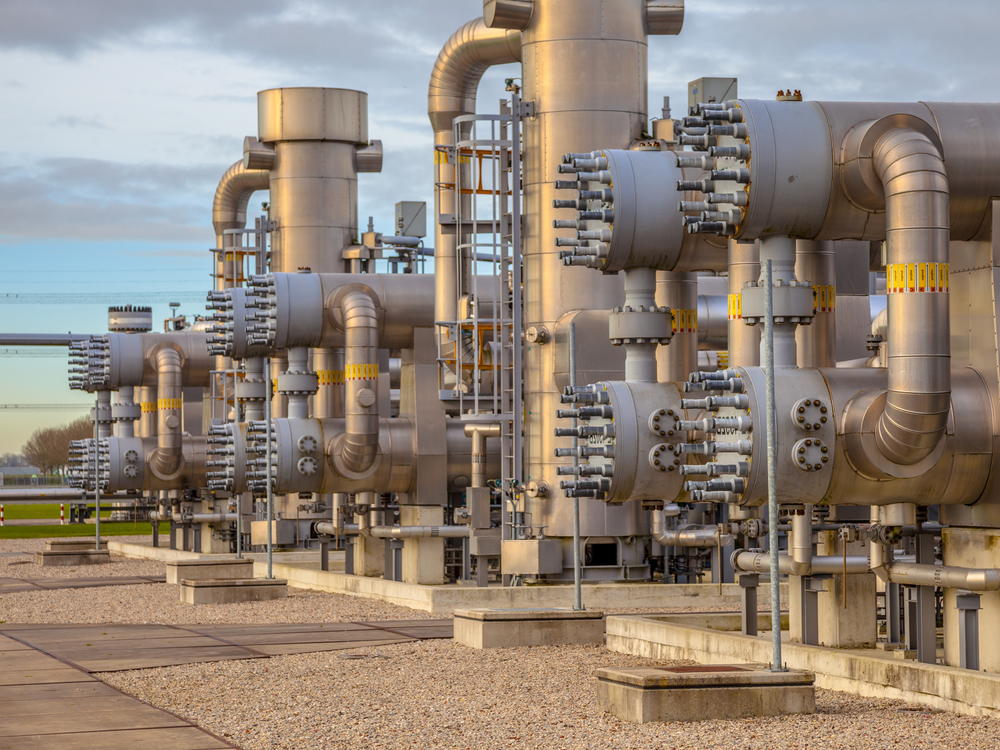
Despite the Netherlands’ rich history of windmills and a stellar ability to fight off the seas, the country falls behind the majority of other EU countries when it comes to adopting renewables.
In 2019, the share of energy from renewable sources in the Netherlands was only 8.8%, according to Eurostat. This was the third-lowest share in Europe after Luxembourg and Malta.
The Netherlands’ clean energy ambitions for the future
While that may leave you feeling slightly pessimistic, there’s no need to fall into complete desperation just yet.
The deployment of renewable energy in the Netherlands has been rapidly progressing, and in 2020, it grew by 40% compared to a year earlier.
On its path to becoming a low-carbon economy, the Netherlands intends to make 16% of all its energy sustainable by 2023.
By 2050, the country’s carbon dioxide (CO2) emissions should reach zero. We have yet to see whether these ambitious low-carbon-economy goals will be met.
However, for now, the Dutch government is placing a large emphasis on energy efficiency and energy savings.
These steps reflect the world’s broader efforts to combat climate change, such as the EU’s ambitious plan to become the first climate-neutral continent by 2050, or the Paris Climate Agreement.
Dutch technology & innovation in green energy
While the Netherlands doesn’t have much to be proud of in terms of carbon emissions, the country does run the show when it comes to innovation and technology. For one, the Netherlands is a global leader in the deployment of electric vehicles, according to the International Energy Agency.
READ MORE | Setting up internet in the Netherlands: the complete guide
Furthermore, the country is home to the world’s largest and most powerful offshore wind turbine.
The public transport sector also has a lot to offer, such as, for example, a completely solar-powered bus station in Tilburg, or the development of the first solar-powered train station in Delft. To add to that, the state-owned railway company NS runs all their trains on wind energy.
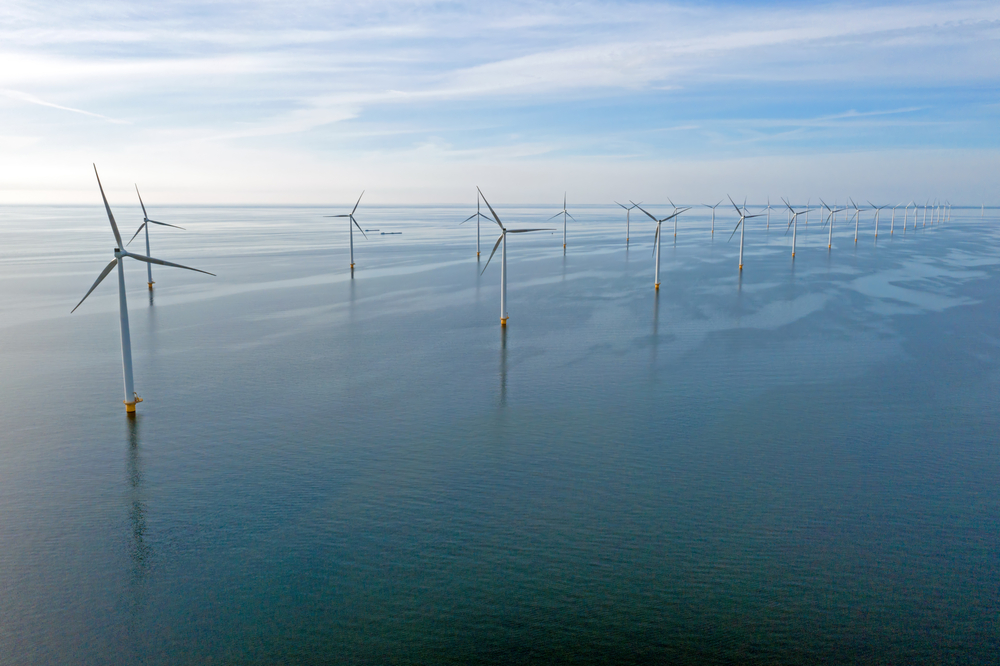
The Dutch are top-notch when it comes to research & development facilities and incentivizing innovation.
The startup culture in the country has given birth to many fascinating projects not only in the realm of clean energy, but also when it comes to re-imagining transportation, or creatively dealing with waste.
Where does Dutch renewable energy come from?
There are a few ways the Netherlands produces renewable energy, the most common forms being wind, biomass, and solar.
Wind energy
Being the land of a thousand windmills, it is no surprise that wind energy is the key renewable energy in the Netherlands.
With its large potential, wind energy is what the Netherlands depends on to achieve its climate goals.
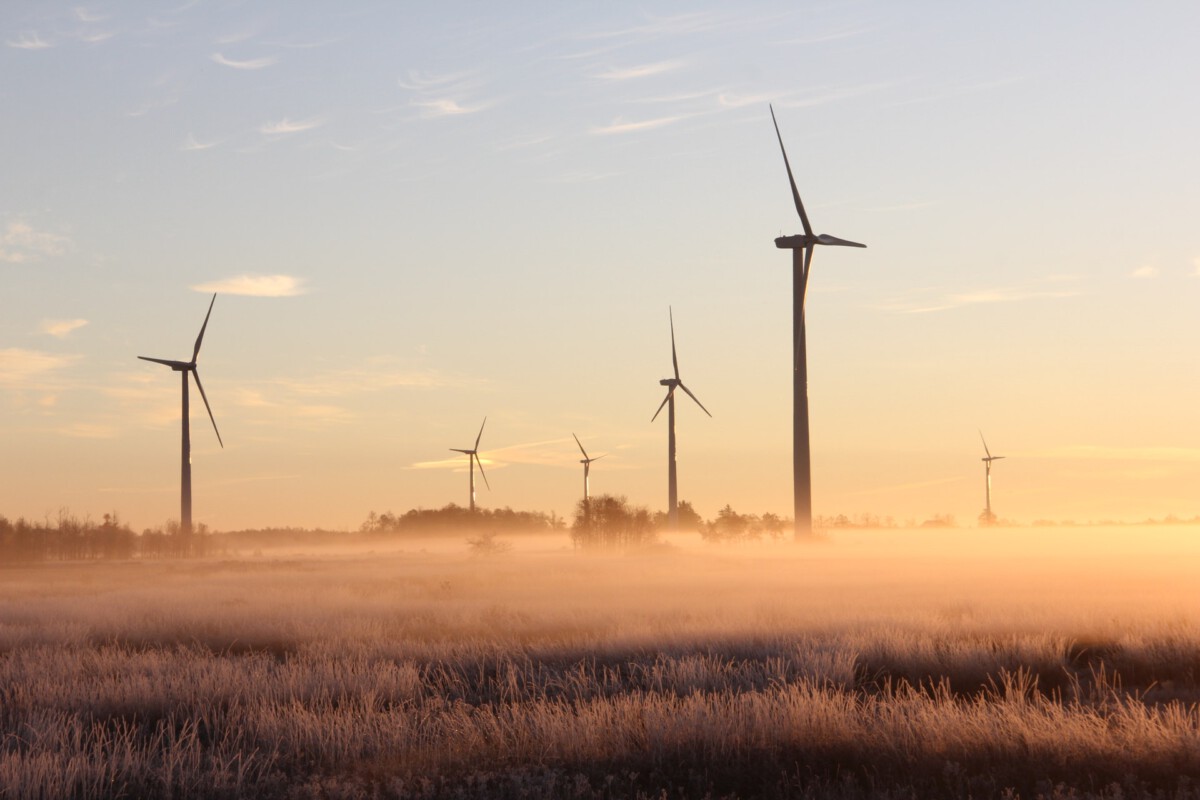
The country currently has over 2,500 onshore wind turbines but has also been increasingly putting emphasis on offshore wind.
This is especially because offshore wind energy is becoming increasingly cheaper, and the shallow waters of the Dutch seas and local wind climates present favourable conditions for implementing them.
Biomass
Biomass is the second biggest renewable source of energy in the Netherlands and comes from plant material or organic waste.
In the Netherlands, biomass is combusted in, for example, coal-fired power plants — this generates heat and electricity.
In line with the EU Directive on Renewable Energy, biofuel also has to make up at least 10% of all transport fuels.
Solar energy
Solar energy has a large potential in the lowlands. The technology needed for its large-scale use is still rather expensive, but the Dutch government is dedicated to boosting its growth.
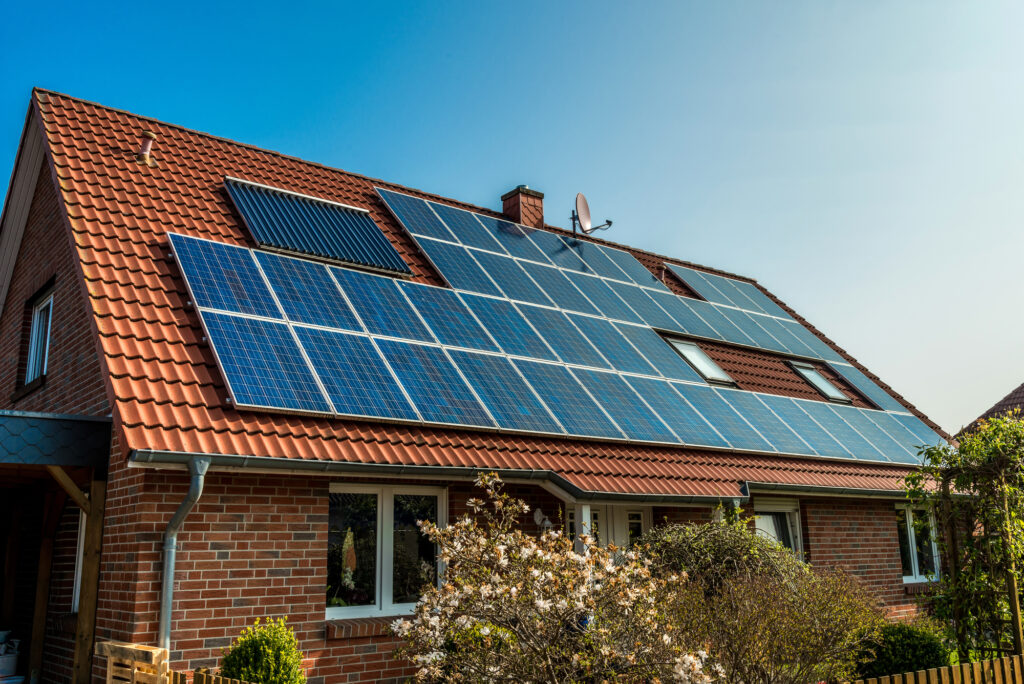
As a consequence, people generating their own electricity through, for example, solar panels, can get discounts on their energy taxes or benefits from sending their excess energy back to the grid.
The government also has a subsidy scheme for businesses and nonprofits producing renewable energy.
Getting renewable energy to your home in the Netherlands
At this point, you’re probably wondering how to get renewable energy supplied straight to your home. Whether you’re renting an apartment or buying your own house, the process of setting up your utilities in the Netherlands can be a daunting one.
The costs of renewable energy in the Netherlands
Setting up the infrastructure needed to produce renewable energy across the country is costly, as it involves large-scale projects like wind turbine installation or the building of solar farms.
However, at a consumer level, green energy will actually cost you the same as (or less than!) grey energy. While innovation is increasingly bringing the costs of renewables down, the Dutch government also heavily subsidises green energy, making it more and more affordable.
READ MORE | 10 dang smart ways to save on energy costs in the Netherlands
Many green energy providers also offer promotional packages with high discounts to switchers from grey energy in an effort to attract new customers.
Green energy providers in the Netherlands
The energy market in the Netherlands is competitive, and there are currently over 30 companies that supply green energy. However, one supplier can be greener than the other, and not everything that’s ‘green’ is actually green.
Why is that? An energy supplier can call itself green when it invests in green development, for example.
Similarly, you can also get a ‘green’ deal from a company that guarantees to supply wind energy to you but also builds coal power plants on the side.

One thing you should keep in mind, though, is that all types of energy in the Netherlands are transported through the same power grid. To truly distinguish between green and grey, the Netherlands works with so-called GvOs (Guarantees of Origin, or Garantie van Oorsprong in Dutch).
Making your Dutch house greener
Whether you’ve already bought a house in the Netherlands or are just taking the first steps towards getting a mortgage, there are a couple of things you may consider if you want to make your home greener.
Solar panels
Having solar panels installed on your roof is not only a relatively simple thing to do but also a financially beneficial one, thanks to the Netherlands’ net metering system.
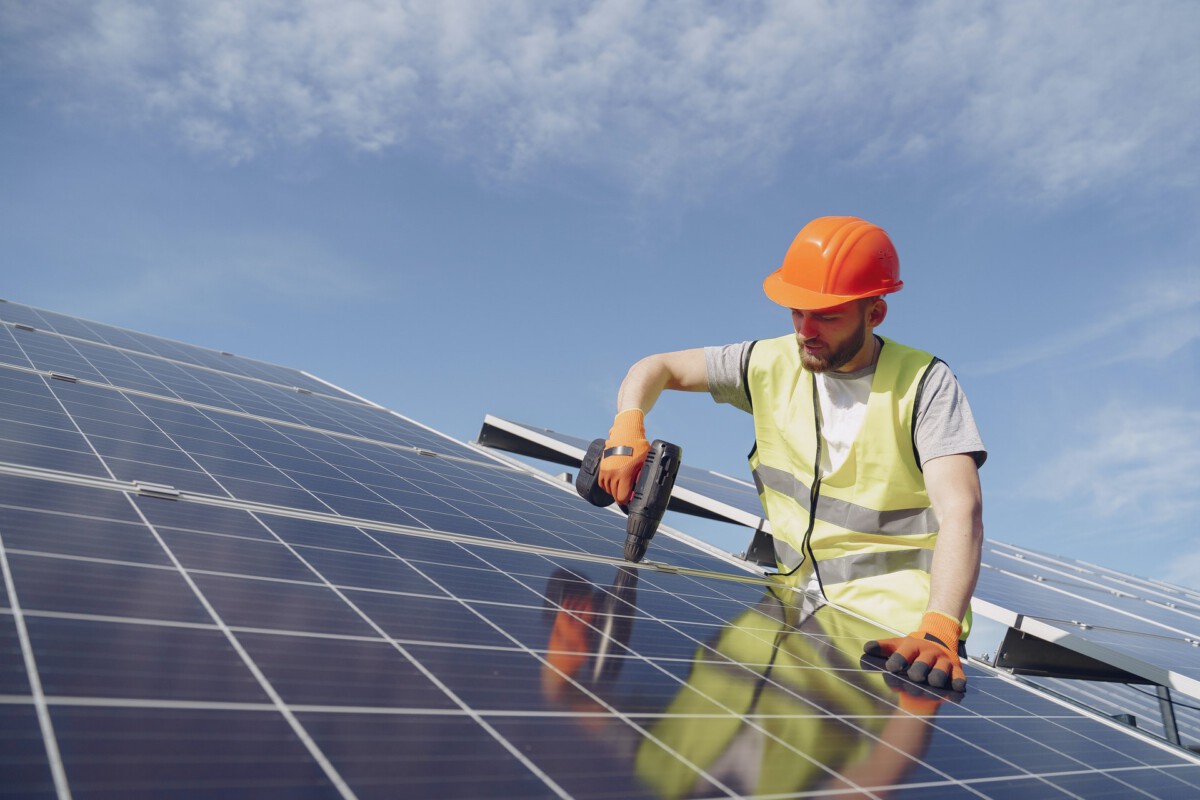
How does it work? If you generate more energy than you consume, you can send the excess energy back to the public grid.
Your energy supplier is then obliged to deduct the energy you sent to the grid from your energy consumption bill.
This regulation will remain in place until the end of 2022. After that, the Dutch government wants to slowly phase out the system.
From 2023 onwards, only 91% of your excess energy will be subject to net metering, and the percentage will gradually drop to 0% in 2031. So what better time to invest in your solar panels than now? 😉
Smart energy manager
A smart energy manager is a device that monitors how you use your energy and subsequently makes the use more efficient.
This can ultimately lower your electricity bill. Smart energy managers look at how much power goes in and out of your house and basically match the electricity consumption of your appliances with the supply at the right moment.
Heat pumps
A heat pump is another device that can be installed in your house. It works by transforming heat from the ground or heat from the air outside into heat in your house.
It’s powered by electricity, so if you pair one with solar panels to power it, you can reduce your bills even further!
As a homeowner, you may be eligible for a grant or a low-interest loan from the Dutch government for some of these energy-saving measures.
Other tips to have a greener home in the Netherlands
Switching to a green energy provider can be a great first step to more environmentally-friendly living. However, here are a few more simple things you can do to make your home, and your life, in the Netherlands more green:
- Make sure your house is properly insulated in order to reduce heat loss. This includes better insulation of the roof, cavity walls, floors, and windows.
- Use energy-efficient appliances. Electrical household appliances such as fridges or washing machines are all required to have an energy label.
- Recycle. In most Dutch cities, you can separate green waste, paper, glass, plastics, metals and drink packaging (PMD), and residual waste. In some cities, including Amsterdam and Rotterdam, PMDs no longer have to be separated by consumers but are separated more efficiently in waste facilities by special technology.
- Waste less food. Food waste is responsible for a significant proportion of the world’s CO2 emissions. Apart from wasting less food in your home, you can also help reduce the food waste from supermarkets and restaurants by using apps such as Too Good To Go.
- Compost at home. If you do end up having some scraps, or are just looking for a better way to get rid of your avocado peels, give composting a go. You can get a specific bin for this purpose from your municipality, or just arrange this yourself and use the compost for your own garden.
Green energy in Amsterdam
If you’re moving to Amsterdam or are currently living here, you’ll be delighted to know that the city is planning to supply 80% of its households with renewable energy by 2030.
The goal is to focus primarily on solar energy, and alongside this plan, Amsterdam aims to stop using natural gas completely by 2040.
If you are a homeowner in Amsterdam and you want to take some measures to make your house more sustainable, you may be eligible for free energy advice from the Gemeente.
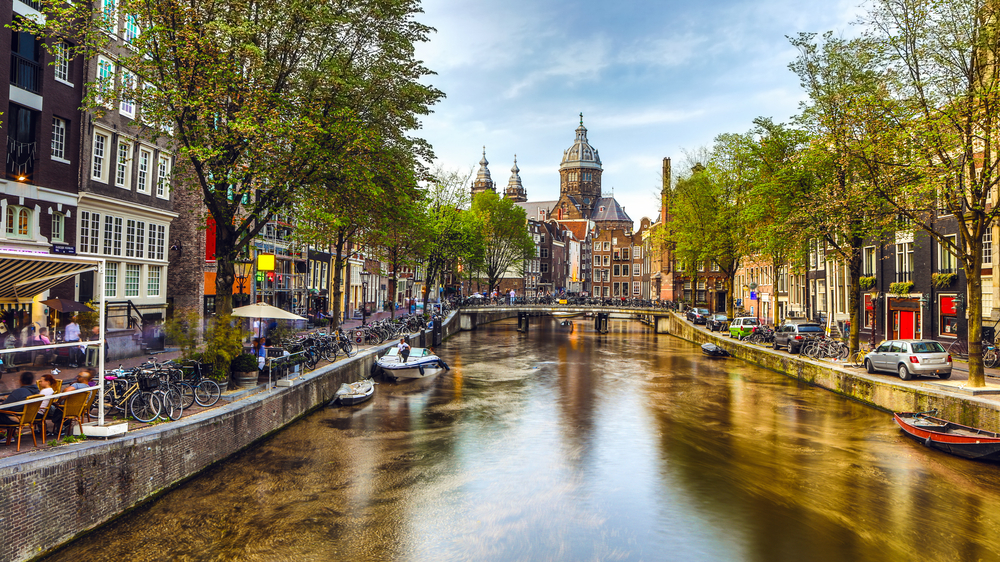
Over the past few years, the city has been working on introducing various marvellous innovations in order to try to adapt to climate change.
In 2018, Amsterdam made plans to install 10,000 square meters of smart blue-green roofs in four of its major areas, protecting its residents from extreme heat and drought, as well as heavy rainfall.
Besides, Amsterdam residents may be able to contribute to green energy generation through cycling sometime in the future, thanks to the S-Park bike rack system.
Green energy in Rotterdam
The Netherlands’ second-biggest city is not far behind when it comes to adopting renewable energy.
As of January 1, 2020, all of the municipal electricity consumption comes from sustainable sources. This includes electricity in public buildings, as well as public lighting.
To become fully independent of fossil fuels, Rotterdam also created the largest solar island in Europe. The 4,800 solar panels on the island follow the sun, making their energy yield much higher than regular solar panels.

The city aspires to become a true leader in clean energy, so if you’re living in or moving to Rotterdam, maybe now is your chance to pitch in!
Doomsday climate change scenarios have been dominating mass media headlines for a few years now, and it’s not without a reason.
The threat of climate change is very real, and we can take action now to adapt to it and mitigate its impacts in the future.
Switching to a green renewable energy provider in the Netherlands or implementing changes to make your Dutch home greener and more sustainable can be small, but nonetheless very important, parts of this process.
What’s your experience with renewable energy in the Netherlands? Share your experience in the comments below!

Unfortunately, biomass isn’t that environmentally friendly. It’s unfortunate that it has been such a large part of the energy portfolio. It can be just as polluting and can lead to deforestation elsewhere.